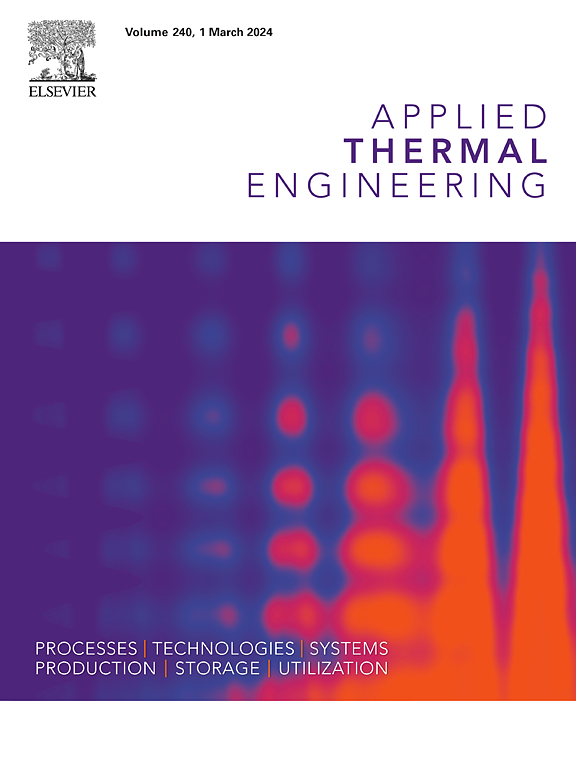生物启发废料玉米芯衍生蒸发器稳定的太阳能蒸发
IF 6.9
2区 工程技术
Q2 ENERGY & FUELS
引用次数: 0
摘要
太阳能驱动的界面水蒸发是一种有前途和可持续的淡水收集策略。然而,制备同时具有优异的耐盐性、蒸发性能和可扩展性的太阳能蒸发器是具有挑战性的。在这里,受植物叶片气孔和叶绿体的启发,设计了一个由玉米芯衍生的仿生太阳能蒸发器(1.2% CuO@ppyCb),装载CuO和聚吡咯,用于高效脱盐。在一次太阳照射下,蒸发器在去离子水、模拟污水和3.5 wt%海水中的平均蒸发速率分别为2.538、1.247和2.027 kg m−2 h−1。在3.5 wt%的海水中进行10小时的室外蒸发实验,该蒸发器的平均蒸发速率高达2.712 kg m−2 h−1。此外,研究证明该蒸发器具有优异的耐盐性。该研究为太阳能蒸发器的设计开辟了一条新途径,在世界不同海域具有优异的蒸发性能,将为解决全球淡水危机做出贡献。本文章由计算机程序翻译,如有差异,请以英文原文为准。
Bioinspired waste corncob-derived evaporator for stable solar evaporation
Solar-driven interfacial water evaporation is a promising and sustainable freshwater collection strategy. However, the preparation of solar evaporators that simultaneously possess excellent salt resistance, evaporation performance and scalability is challenging. Here, inspired by stomas and chloroplast of plant leave, a bionic corncob-derived solar evaporator (1.2 % CuO@ppyCb) loaded with CuO and polypyrrole was designed for efficient desalination. The evaporator achieved average evaporation rates of 2.538, 1.247 and 2.027 kg m−2 h−1 respectively in deionized water, simulated sewage and 3.5 wt% seawater under one sun irradiation. In a 10-hour outdoor evaporation experiment in 3.5 wt% seawater, the average evaporation rate of this evaporator was as high as 2.712 kg m−2 h−1. Furthermore, the research has proved that this evaporator has excellent salt resistance. This study represented a new path for the design of solar evaporators, which have excellent evaporation performance in different sea areas around the world and will contribute to solving the global freshwater crisis.
求助全文
通过发布文献求助,成功后即可免费获取论文全文。
去求助
来源期刊

Applied Thermal Engineering
工程技术-工程:机械
CiteScore
11.30
自引率
15.60%
发文量
1474
审稿时长
57 days
期刊介绍:
Applied Thermal Engineering disseminates novel research related to the design, development and demonstration of components, devices, equipment, technologies and systems involving thermal processes for the production, storage, utilization and conservation of energy, with a focus on engineering application.
The journal publishes high-quality and high-impact Original Research Articles, Review Articles, Short Communications and Letters to the Editor on cutting-edge innovations in research, and recent advances or issues of interest to the thermal engineering community.
 求助内容:
求助内容: 应助结果提醒方式:
应助结果提醒方式:


